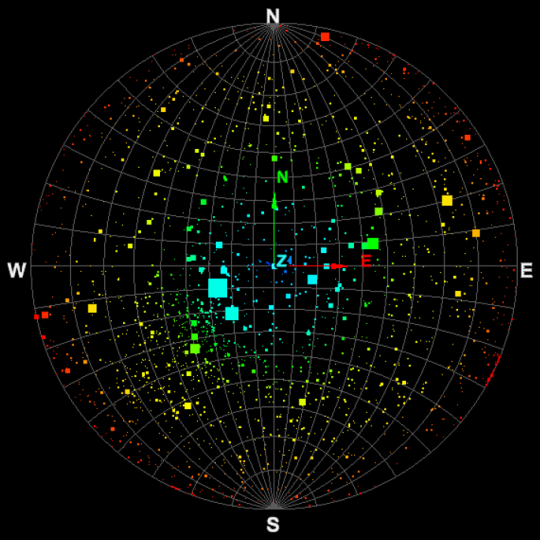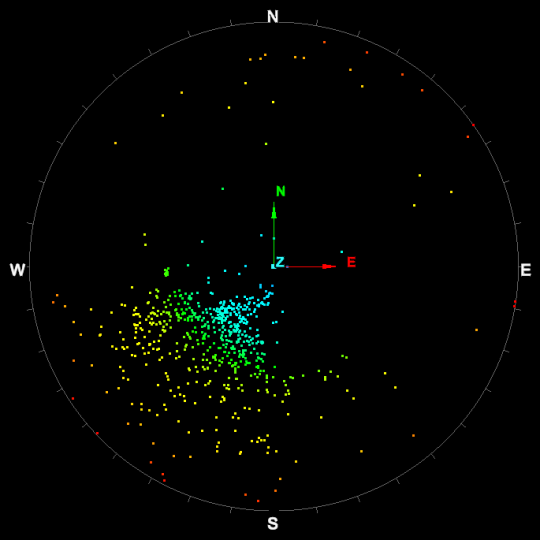Create Stereonet
Source file: create-a-stereonet.htm
A
stereonet ![]() plots slope and slope direction (dip and strike) of the poles of discontinuities
onto a two-dimensional graph. It helps to identify discontinuity sets
plots slope and slope direction (dip and strike) of the poles of discontinuities
onto a two-dimensional graph. It helps to identify discontinuity sets ![]() and analyse the stability of rock slopes.
and analyse the stability of rock slopes.
Data preparation
Before creating a stereonet, follow these steps to prepare suitable data:
Note: If this data has previously been prepared and exported to a .csv file, it does not need to be recreated. The stereonet can be created
from file data.
-
Select a surface
 created with
created with  Spherical Surface,
Spherical Surface,
 Scan Surface or
Scan Surface or  Fusion Surface.
Fusion Surface. Note: Topographic surfaces are not suitable for geotechnical analysis as they are created in a top-down manner that does not provide sufficient detail on rock slopes.
-
On the Geotechnical tab, in the Colour group, click
 Colour Dip and
strike to highlight the areas to be analysed.
Colour Dip and
strike to highlight the areas to be analysed. -
Select point
 or facet
or facet  selection type.
selection type. -
Select some points on a structure of interest.
-
On the Geotechnical tab, in the Dip and Strike group, click
 Extract
discontinuities.
Extract
discontinuities. -
Repeat steps 2 to 5 for all structures of interest. Discontinuity objects are saved in the
geotechnicalcontainer for each query.
Stereonet creation
After the data have been prepared, follow this procedure to create a stereonet ![]() :
:
-
On the Geotechnical tab, in the Stereonet group, click
 Create Stereonet.
Create Stereonet. -
Add discontinuities
 to the Stereonet data field.
to the Stereonet data field. -
Select Poles, Planes or Intersections as the preferred representation of discontinuities on the stereonet. You can select these globally or individually to suit requirements.
-
Click OK or Apply to create a new stereonet in the
geotechnicalcontainer.
Stereonet view options
Open
the stereonet ![]() in a new view window, which will display the stereonet view toolbar.
in a new view window, which will display the stereonet view toolbar.

Configure the stereonet with the available functions. See Stereonet toolbar for details.
|
|
|
Equal angle, equatorial grid, scale poles by area |
|
|
|
Equal angle, polar grid |
|
|
|
Equal angle, no grid. |
Note: You can also add contours to the stereonet data to help identify data of interest. See Stereonet Contours.



